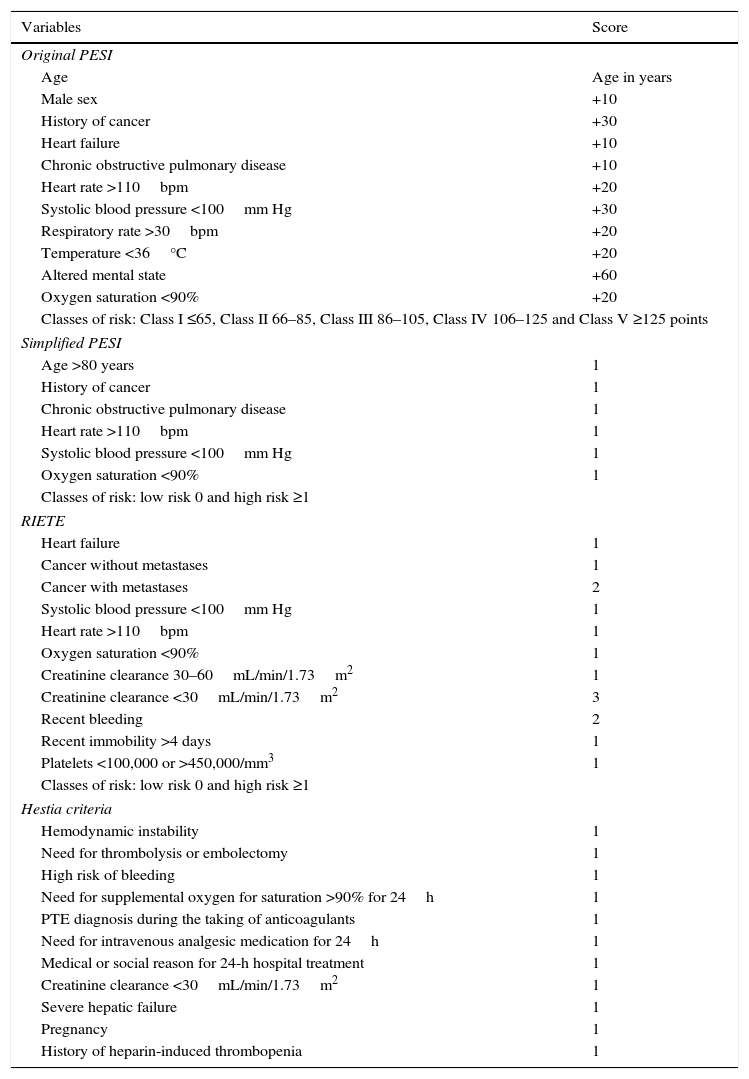Early mortality in patients with pulmonary thromboembolism (PTE) varies from 2% in normotensive patients to 30% in patients with cardiogenic shock. The current risk stratification for symptomatic PTE includes 4 patient groups, and the recommended therapeutic strategies are based on this stratification. Patients who have hemodynamic instability are considered at high risk. Fibrinolytic treatment is recommended for these patients. In normotensive patients, risk stratification helps differentiate between those of low risk, intermediate-low risk and intermediate-high risk. There is currently insufficient evidence on the benefit of intensive monitoring and fibrinolytic treatment in patients with intermediate-high risk. For low-risk patients, standard anticoagulation is indicated. Early discharge with outpatient management may be considered, although its benefit has still not been firmly established.
La mortalidad precoz en pacientes con tromboembolia pulmonar (TEP) varía desde el 2% en pacientes normotensos al 30% en pacientes con shock cardiogénico. La estratificación actual de riesgo en la TEP sintomática incluye 4 grupos de pacientes y las estrategias terapéuticas recomendadas se basan en dicha estratificación. Los pacientes que se presentan con inestabilidad hemodinámica se consideran de alto riesgo y en ellos se recomienda el tratamiento fibrinolítico. En pacientes normotensos, la estratificación de riesgo ayuda a diferenciar entre aquellos de bajo riesgo, riesgo intermedio-bajo y riesgo intermedio-alto. Actualmente no existe suficiente evidencia sobre el beneficio de una monitorización intensiva y tratamiento fibrinolítico en pacientes con riesgo intermedio-alto. En pacientes de bajo riesgo, está indicada la anticoagulación estándar y podría considerarse la posibilidad de un alta precoz con manejo ambulatorio, aunque su beneficio no está todavía firmemente establecido.
Article
Diríjase desde aquí a la web de la >>>FESEMI<<< e inicie sesión mediante el formulario que se encuentra en la barra superior, pulsando sobre el candado.

Una vez autentificado, en la misma web de FESEMI, en el menú superior, elija la opción deseada.

>>>FESEMI<<<








